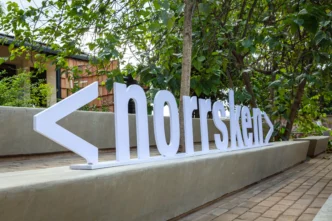Nvidia is taking a major leap into the world of robots with the launch of Newton, a cutting-edge physics engine designed to simulate realistic robot movements in real-world environments. Announced by Nvidia CEO Jensen Huang at the GTC 2025 keynote, the project is being developed in collaboration with Disney Research and Google DeepMind.
This new simulation engine aims to solve one of robotics’ biggest challenges—how machines interact naturally with complex, unpredictable surroundings. Newton is designed to make robots more expressive and precise, allowing them to handle intricate tasks that require a delicate touch, from manipulating cloth and food to moving through sand or soft materials.
One of the first real-world applications of Nvidia’s Newton physics engine will be at Disney theme parks, where fans can expect to meet a new generation of highly realistic entertainment robots. Among them are the Star Wars-inspired BDX droids, which made a surprise appearance alongside Huang during his GTC presentation.
For years, Disney has teased the possibility of these droids roaming their parks, offering fans a taste of the Star Wars universe up close. After multiple test runs—including a demo at SXSW 2025—the technology now appears ready for prime time. Thanks to Newton, these robots are expected to display more lifelike, fluid movements when they debut at select Disney parks next year.
In a press statement, Kyle Laughlin, SVP of Disney Imagineering, emphasized that this partnership with Nvidia and Google DeepMind will be instrumental in shaping Disney’s future robotic characters. “Newton’s capabilities will unlock new levels of realism and interaction for our entertainment robots,” Laughlin shared.
According to Nvidia, Newton is built to integrate seamlessly with Google DeepMind’s existing MuJoCo physics engine, known for simulating complex robotic joint movements. Together, these tools will give developers powerful resources to train robots capable of performing real-world tasks with unprecedented precision.
What sets Newton apart is its high degree of customization. Developers can fine-tune simulations based on the environment or the materials robots interact with—be it handling food delicately or navigating through sand or deformable objects. This flexibility is expected to accelerate advancements in both entertainment and functional robotics.
Adding another layer to its robotics push, Nvidia also introduced Groot N1, a general-purpose AI foundation model for humanoid robots. Groot N1 is designed to help robots perceive and reason more effectively in their environments, marking another significant step forward in AI-powered robotics.
Nvidia’s GTC 2025 event was packed with forward-looking announcements, including the rollout plans for its next-generation AI chips—Blackwell Ultra and Rubin—and the debut of a new lineup of personal AI computers.
But it’s the Newton engine that’s generating buzz in the robotics community. Slated for an early open-source release later in 2025, Newton could set a new standard in robotic physics simulation, offering developers around the world a tool to create robots that move, react, and interact with the world as naturally as living beings.
As Nvidia teams up with giants like Disney and Google DeepMind, it’s clear that the next era of robotics will be more lifelike, engaging, and integrated into our daily experiences.











